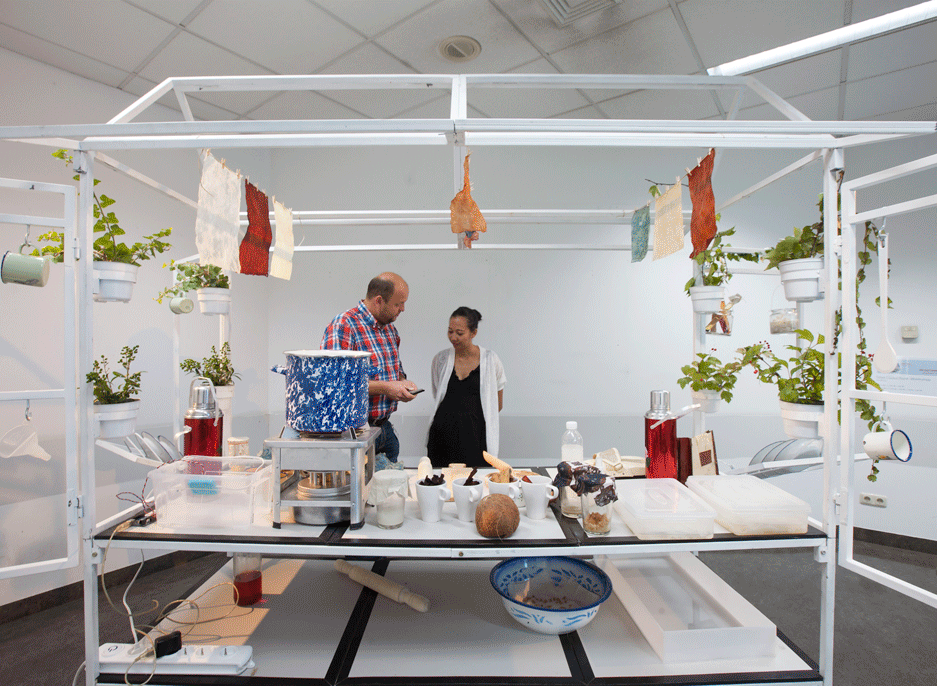Press Release
Taking NTU CCA Singapore’s overarching research topic Climates. Habitats. Environments. as point of departure, the exhibition The Posthuman City considers the possibilities of a caring and respectful co-

The Posthuman City: Climates, Habitats, Environments
NTU Centre for Contemporary Art Singapore
23.11.2019 - 23.02.2020

Currently, more than half of the world’s human population lives in urban areas. Urban growth poses challenges to the various city dwellers, and creates material demands that cause lasting damage to the wider environment. The climate crisis is already announcing threatening scenarios particularly for coastal regions and megacities located at coastlines. Global urbanisation and the exploitation of resources happen on the expense of human and other species alike. The Posthuman City features artists who propose a shift in perspective.
Stressing the vital importance of clean water and the challenges of its scarcity around the world, Lucy + Jorge Orta’s have developed a long-
Indigenous peoples of various territories around the world, with deep historical and cultural ties to their land, have preserved sustainable ways of living that respect the limits of the planet’s resources. Calling for exchanges of knowledge between indigenous communities and contemporary scientists and urban theorists, Marjetica Potrč’s Earth Drawings refer to the significance of indigenous knowledge and cosmogonies. Planetary co-
The exploitative relationship between humans and other living creatures, including the domestication of animals, is also examined in Pierre Huyghe’s Untitled (Human Mask), where the artist films a monkey, Fuku-
Death, from a post-
A parable on economic crashes, financial trading, mixed martial arts, and general contemporary culture, Hito Steyerl screen installation Liquidity Inc. using water and liquidity as tropes. Opening with Bruce Lee’s “be water, my friend,” the work comments on the circulation of digital images, big data, information, financial assets, labour, and weather systems. The intricate mesh of late capitalism structures needs to be hijacked in order to allow space for new ecological and sustainable policies that value people and life over profit.
The Posthuman City, through artistic propositions, intends to open a discussion about the imbalanced relationship of an anthropocentric thinking with the living environment.
Artists : Irene Agrivina (Indonesia) / Animali Domestici (Italy/Thailand) / Ines Doujak (Austria/United Kingdom) / Pierre Huyghe (France/United States) / Jae Rhim Lee (South Korea/United States) / Lucy + Jorge Orta (United Kingdom, Argentina/France) / Nicholas Mangan (Australia) / Marjetica Potrč (Slovenia/Germany) / Hito Steyerl (Germany)
Curated by Ute Meta Bauer, Professor, School of Art, Design and Media, NTU, and Founding Director, NTU CCA Singapore, and Laura Miotto, Associate Professor, School of Art, Design and Media, NTU.

1. Irene Agrivina, SOYA C(O)U(L)TURE, 2014, installation view of XXLab: SOYA C(O)U(L)TURE workshop, Post City, Ars Electronica 2015. Courtesy Ars Electronica, Linz. 2. Ines Doujak, Ghospopulations (detail), 2016–19. Courtesy the artist. 3. Marjetica Potrč, The Pot Maker Shapes Unity, 2016. Courtesy the artist and Galerie Nordenhake, Berlin, Stockholm, Mexico City. 4. Hito Steyerl, Liquidity Inc., 2014. Courtesy the artist and Esther Schipper, Berlin.

Exhibition November 23, 2019 -
© ArtCatalyse International / Marika Prévosto 2019. All Rights Reserved